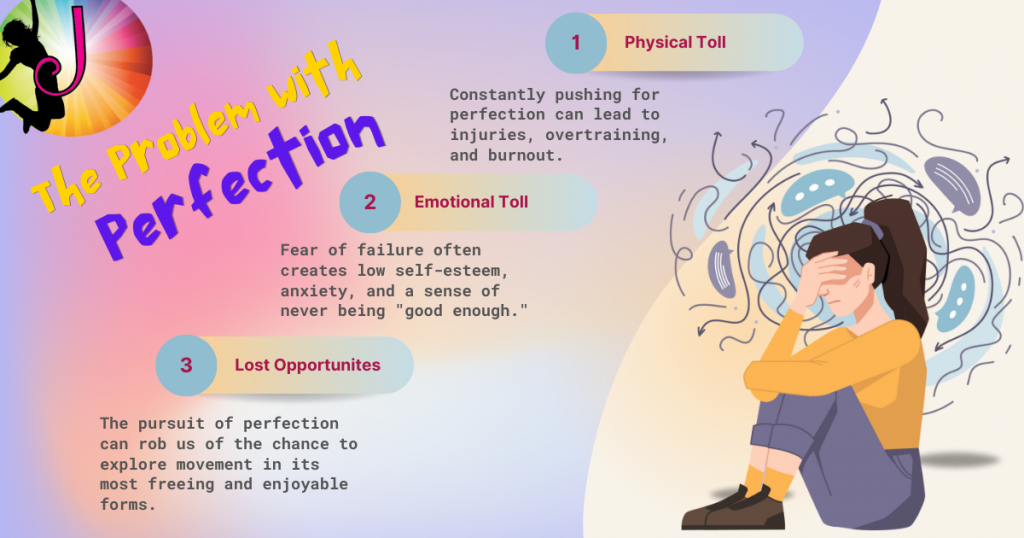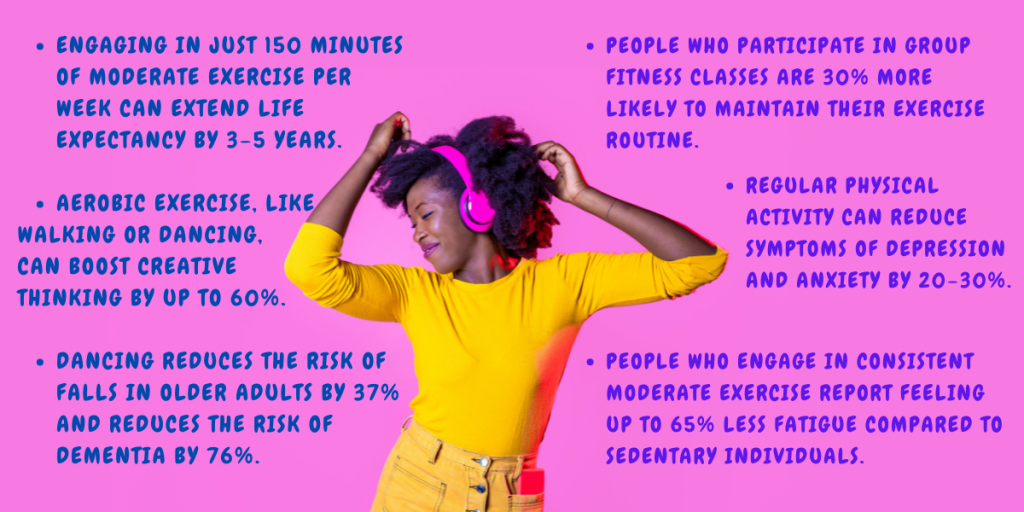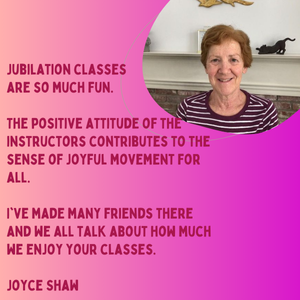Everyone knows they should exercise—it’s practically drilled into us from every health class, fitness app, and wellness article. But let’s be honest: for a huge chunk of people, the thought of lacing up sneakers and hitting the gym fills them with dread. According to surveys, nearly half of people admit they avoid exercising simply because they don’t enjoy it.
But here’s the thing: movement doesn’t have to be miserable. In fact, when we shift the focus from perfection to joy, exercise can become something we actually look forward to—a celebration of what our bodies can do, not a punishment for what they’re not.
The Problem with Perfection
Perfectionism can be a powerful motivator, but in the world of fitness and movement, it often does more harm than good. Social media feeds are filled with flawless dance routines, impossibly fit bodies, and record-breaking achievements that can make us feel like we’ll never measure up. The pressure to perform perfectly doesn’t just affect our confidence—it can hold us back from even trying.

The truth is, no one gets everything right every time—not even professional athletes or dancers. Movement doesn’t have to look perfect to feel amazing. The joy isn’t in the flawless execution; it’s in the laughter, connection, and freedom that come from simply moving. Case in point… check out our slogan. There are no mistakes – only unexpected solos.
What is Joyful Movement?
Joyful movement is exactly what it sounds like—moving your body in ways that feel good, make you happy, and bring a smile to your face. It’s not about burning the most calories, hitting a personal best, or perfecting every step. It’s about the sheer pleasure of being active, however that looks for you.
At its core, joyful movement is freeing. It invites you to let go of expectations and focus on how movement makes you feel, not how it looks or how others perceive it. It’s about appreciating what your body can do, no matter your age, experience, or fitness level.

The beauty of joyful movement is its inclusivity. You don’t have to be a dancer, an athlete, or a fitness pro to participate. Joyful movement can take countless forms:
- Dancing in your living room like no one’s watching.
- Playing a game of tennis, even if your serve is less than perfect. (just ask my husband, who joyfully crushes me at tennis at least twice a week. LOL)
- Taking a walk with your dog and soaking in the sights and sounds around you.
- Gardening, hiking, swimming, or simply stretching and breathing deeply.
Joyful movement is about more than physical benefits; it’s about creating a positive relationship with your body and finding ways to move that nurture your mind, body, and soul. Joyful movement reminds us that moving isn’t just something we have to do—it’s something we get to do.

Respecting Different Joys
Joyful movement looks different for everyone, and that’s what makes it so special. For some, joy comes from chasing goals—hitting a running personal record, perfecting a dance routine, or lifting heavier weights. And if those goals bring happiness and fulfillment, that’s worth celebrating!
However, it’s important to recognize that gains aren’t forever. Bodies change, life happens, and the pursuit of progress can sometimes feel exhausting. The good news is that the joy of movement doesn’t depend on milestones or metrics—it’s a lifelong gift. Whether you’re chasing goals or simply moving for fun, the joy you find in movement can adapt and evolve with you.
The beauty of movement is that there’s no one-size-fits-all approach. Some people might thrive in the rhythm of a dance class, while others feel most alive hiking in the mountains, gardening, or playing sports with friends. Joyful movement is about finding what resonates with you, not what’s trendy or what someone else defines as “perfect.”
By exploring different forms of movement and embracing what feels good in the moment, you can create a relationship with activity that brings genuine happiness and supports you through every stage of life. Joy isn’t about doing it like anyone else—it’s about discovering your own unique path to happiness through movement.
Why Joyful Movement is Sustainable
Exercise offers a wealth of benefits for both your body and mind. From improving cardiovascular health and boosting energy levels to reducing stress and enhancing mood, physical activity is a cornerstone of overall wellness. But with so many options to choose from, it can feel overwhelming to find the “perfect” workout.
Here’s the truth: the best exercise is the one you’re actually willing to do.

The beauty of joyful movement is that it’s not a short-term fix—it’s something you can carry with you for a lifetime. Unlike rigid fitness goals that often feel like chores, joyful movement inspires consistency and long-term well-being by focusing on what feels good rather than what looks or sounds impressive.
1. It Encourages Consistency
When movement feels like play, you’re naturally drawn to it. There’s no dread or guilt about missing a session because it’s something you genuinely enjoy doing. Whether it’s dancing in a studio, playing tennis with friends, or taking a relaxing stroll, joyful movement becomes something you look forward to, not something you force yourself to endure.
2. It Shifts the Focus to Positivity
Traditional fitness often emphasizes weight loss, reps, or perfection, which can feel discouraging over time. Joyful movement, on the other hand, shifts the focus to what your body can do and how it feels. This positive reinforcement creates a healthy, empowering relationship with movement. One participant at Jubilation shared, “I always feel positive, revitalized, and cheerful when I leave.”
3. It Adapts with You
Life changes—your body changes, your interests evolve, and your abilities shift. Joyful movement is flexible. Whether you’re recovering from an injury, navigating aging, or just trying something new, joyful movement grows with you. As one member at Jubilation said, “Through life’s ups and downs and with changing physical abilities, dance always nurtures my mind, body, and soul.”

4. It Prioritizes Fun Over Perfection
Chasing perfection is exhausting and unsustainable. No one can hit a personal best every time or flawlessly execute every move forever. Joyful movement, however, isn’t about achieving perfection—it’s about having fun and celebrating the act of moving, even if it’s messy or unconventional. As we like to say at Jubilation, “There are no mistakes, only unexpected solos.”
5. It Builds a Sense of Community

One of the most underrated benefits of joyful movement is the way it brings people together. Joining a dance class, hiking group, or recreational sports league can introduce you to like-minded individuals who share your interests.
Moving together not only boosts motivation but also fosters connections, creating a sense of belonging and support. When exercise becomes a shared experience, it’s easier to stick with and so much more rewarding. After all, laughter and camaraderie make the effort feel like less of a chore and more of a celebration.
6. It Creates A Lifelong Love Of Movement
The key to sustainable movement is finding what you love. When you move for joy, you’re not just building a habit—you’re cultivating a lifelong appreciation for what your body can do. This love for movement becomes part of who you are, making it far more likely that you’ll continue to prioritize activity throughout your life.
By embracing joyful movement, you’re choosing a sustainable path to health and happiness—one that evolves with you, inspires consistency, and uplifts your spirit every step of the way. It’s not about doing it perfectly—it’s about doing it joyfully.
Final Thoughts
Perfectionism can feel like a badge of honor, pushing us to strive for excellence and setting high standards. But when it comes to fitness and movement, the pursuit of perfection often does more harm than good. Instead of motivating us, it can leave us feeling paralyzed, afraid to take the first step, or frustrated when we don’t measure up to impossible ideals.
Life is too short to let the fear of imperfection keep you from moving, laughing, and experiencing the joy (and all of the other benefits) that movement can bring. Whether it’s dancing like no one’s watching, playing a game of catch with your kids, or taking a simple walk in nature, remember that the beauty of movement isn’t in doing it perfectly—it’s in doing it joyfully.

